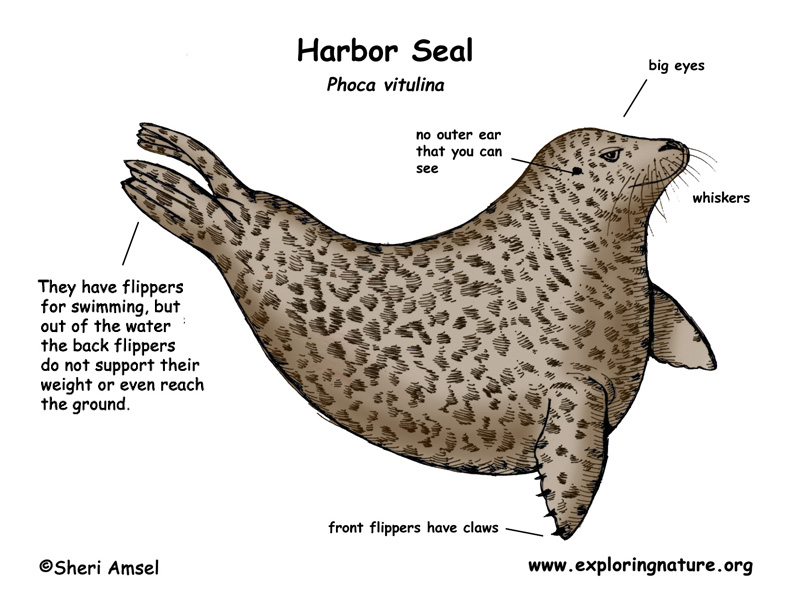

They are found in the oceans in the Northern Hemisphere.
They live in the ocean and on beaches, sand bars, reefs and ice floes.
They are up to 6 feet long and can weigh more than 300 pounds. They are gray to black with dark spots. They have big eyes but no ears you can see. They have flippers for swimming, but out of the water their back flippers do not support their weight or even reach the ground.
They gather on the beaches in late summer into loosely formed colonies, where mature seals will find mates. They swim moving their tail up and down and can go very fast leaping out of the water onto the beach.
They eat fish and shellfish.
They can be eaten by killer whales and sharks in the ocean and on land are eaten by coyotes, bears and birds of prey and foxes.
Females are pregnant (gestation) for 7 - 10 months and have 1 or 2 pups.
They live 25 years in the wild. They are listed as Lower Risk - least concern.
Kingdom: Animalia
Phylum: Chordata
Subphylum: Vertebrata
Class: Mammalia
Order: Carnivora
Suborder: Caniformia
Family: Phocidae
Genus: Phoca
Species: Phoca vitulina
When you research information you must cite the reference. Citing for websites is different from citing from books, magazines and periodicals. The style of citing shown here is from the MLA Style Citations (Modern Language Association).
When citing a WEBSITE the general format is as follows.
Author Last Name, First Name(s). "Title: Subtitle of Part of Web Page, if appropriate." Title: Subtitle: Section of Page if appropriate. Sponsoring/Publishing Agency, If Given. Additional significant descriptive information. Date of Electronic Publication or other Date, such as Last Updated. Day Month Year of access < URL >.
Amsel, Sheri. "Seal (Harbor)" Exploring Nature Educational Resource ©2005-2024. December 13, 2024
< http://exploringnature.org/db/view/387 >

